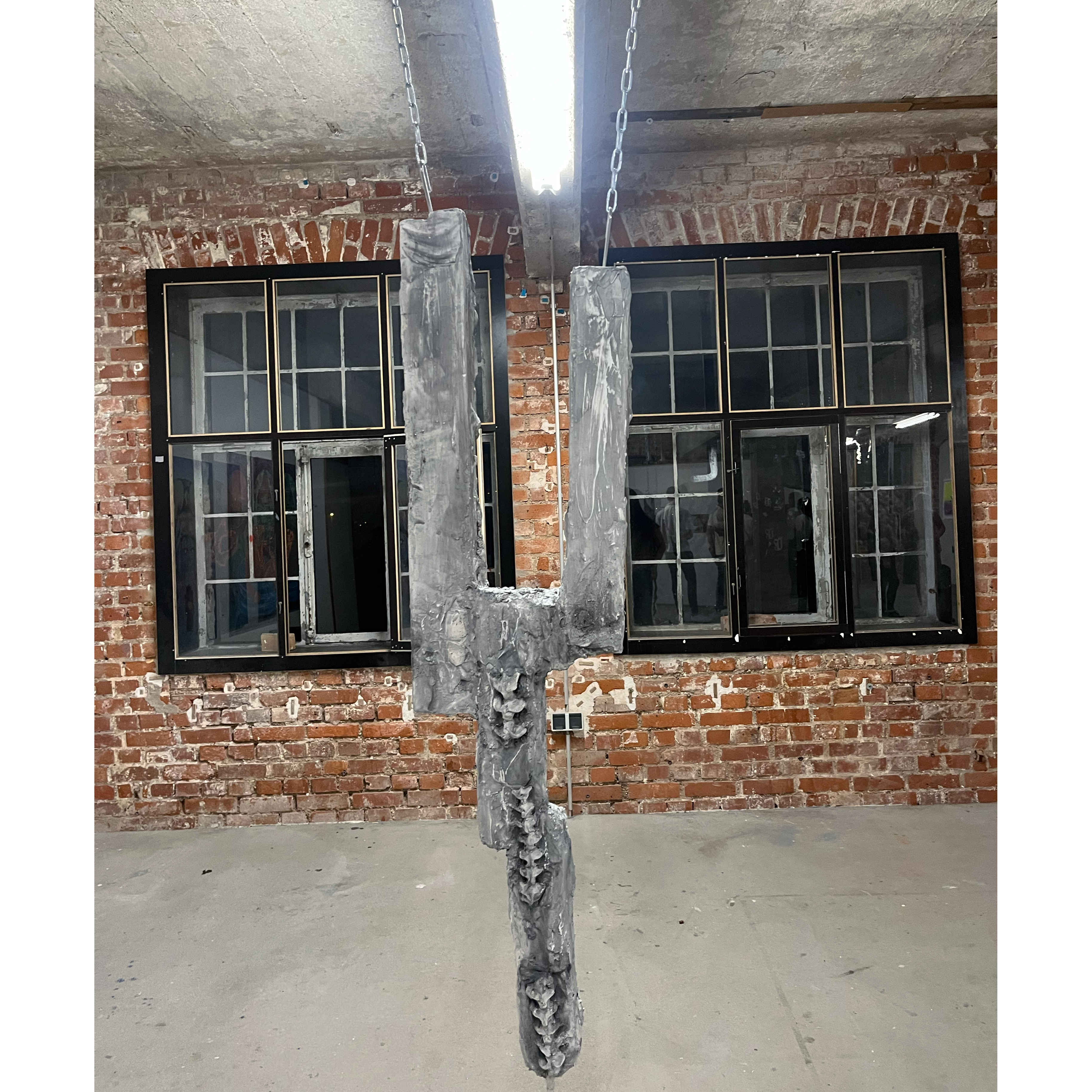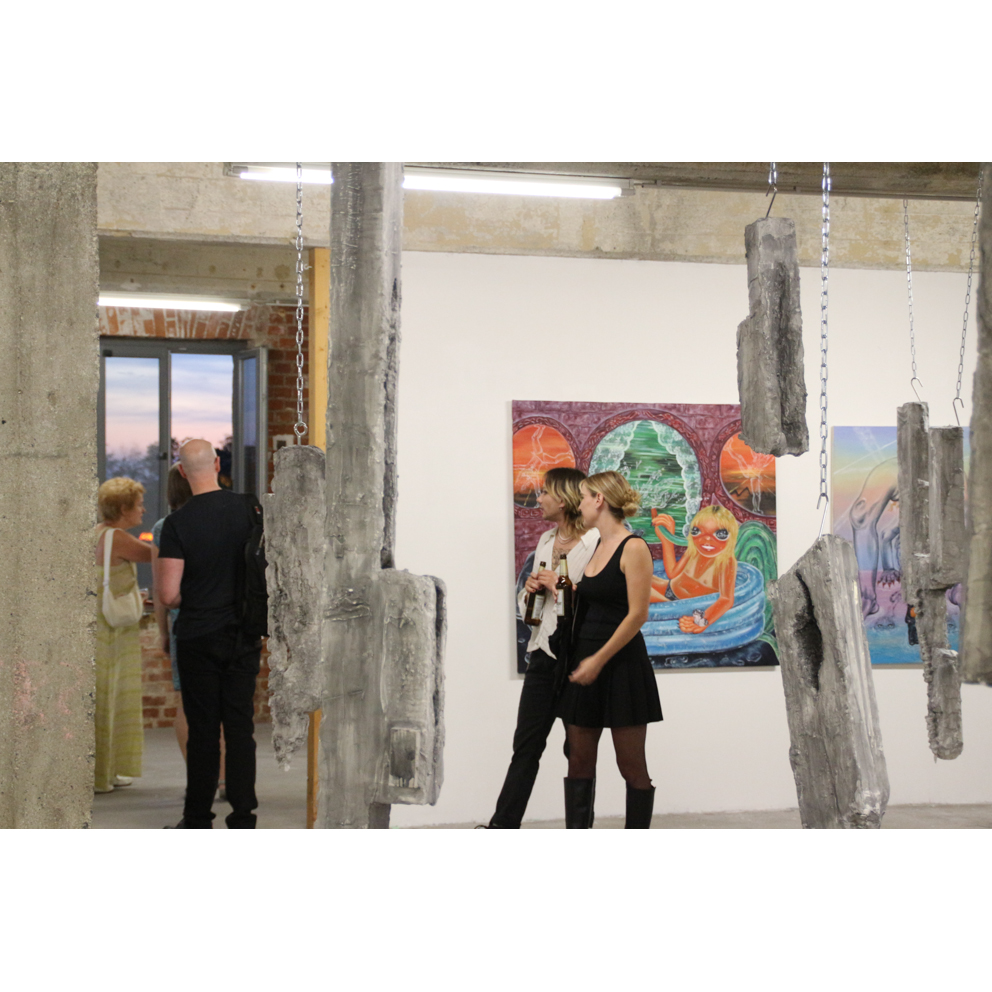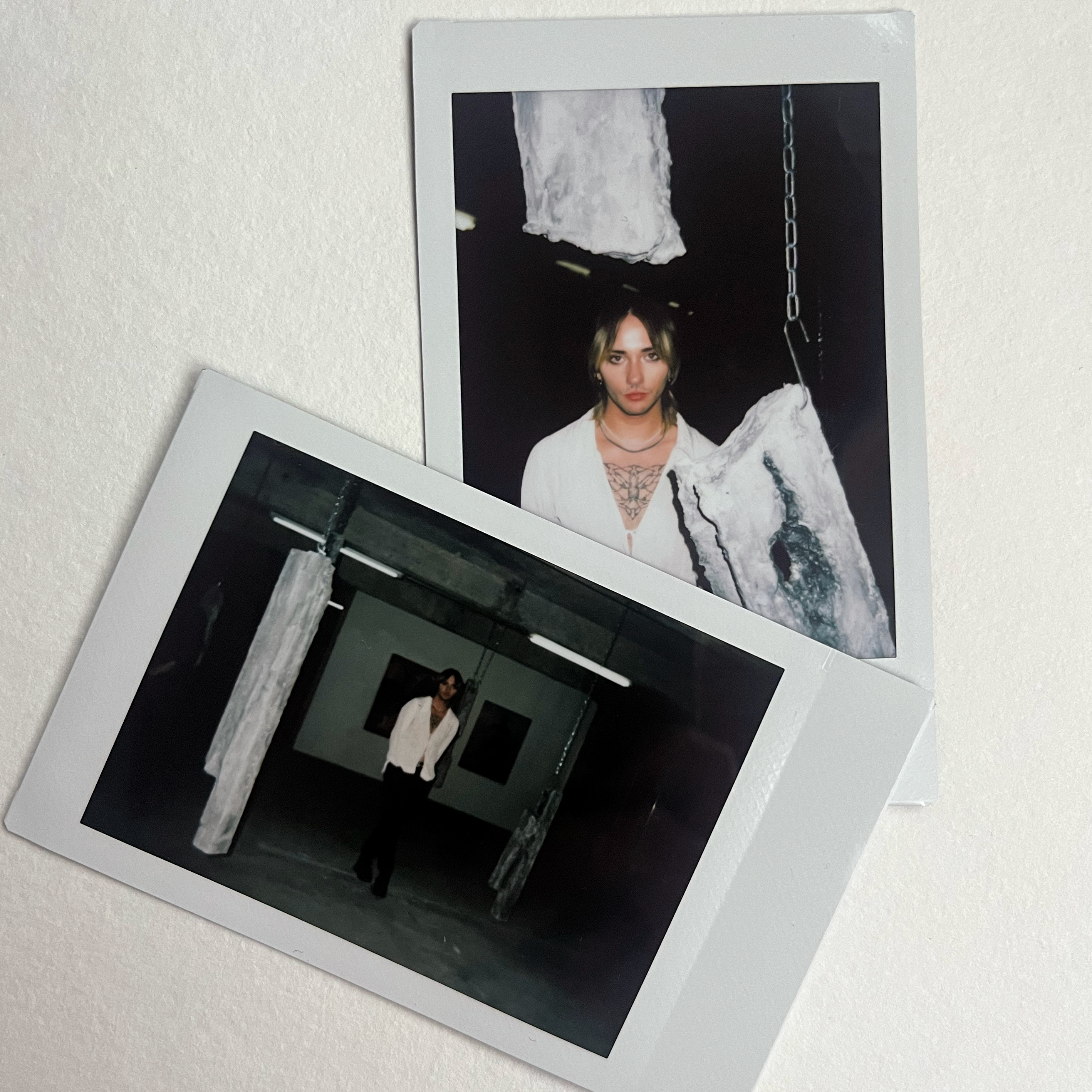Ossifications 1-12 (Franz-Flemming Straße 9, 2023)
Variable Mediums
Created at PILOTENKUECHE International Art Program, Leipzig, DE


This disparate and immersive installation explores architectural abstraction and memory held within spaces. These sculptures are ghosts as well as pendulums, keepers of time and memory. They are bulging reminders that history and human experience cannot be plastered or painted over.





This disparate and immersive installation explores architectural abstraction and historical trauma.
This series, built in Franz Flemming Straße atelierhaus, a repurposed barbed wire factory, references the ambient surroundings of their installation, interrogating ideas of ruin and restoration, whether a space can truly be repurposed, rephrased, turned anew, cleansed. Can we ignore the atmospheric violence of this space as we make art and eat lunch? What does it mean to move on?
This series, built in Franz Flemming Straße atelierhaus, a repurposed barbed wire factory, references the ambient surroundings of their installation, interrogating ideas of ruin and restoration, whether a space can truly be repurposed, rephrased, turned anew, cleansed. Can we ignore the atmospheric violence of this space as we make art and eat lunch? What does it mean to move on?
Bodies often hold trauma in the same way buildings do. Sometimes kept deep in a crawl space or storage room. Sometimes, memories are painted over and over (see Landlord Special) until they are barely recognizable as memory, but you will always notice that convexity in the drywall years later as your eyes drift along your familiar space when no one else does.
This attempted forgetting is visualized in the series’ progression spatially. As the viewer is led through the space by curatorial choices and other artworks installed, the pieces become less architectural. References to the human body become part of the internal logic and architecture of the hanging forms as the viewer progresses through the space. The hooks used to suspend the forms become gory when earlier in the piece they were simply utilitarian. The forms become pierced rather than perforated. The shift conjures the sensation of seeing a figure out of the corner of your eye in a darkened room, which is actually just a beam. Or was it?
These sculptures are ghosts as well as pendulums, keepers of time and memory. They are bulging reminders that history and human experience cannot be plastered or painted over.
The transition from architectural to abstract can also be read as an ossification of the body, the many people who have passed through this space have intentionally (graffiti) and unintentionally (wear in the floor) created this space as it exists today. The progression of this warehouse (and the broader society it has served) into rubble can be fought, but eventually, and universally, rubble will prevail. But even after this shift from structure to entropy, history’s most forgotten ghosts will remain to sway with the wind.